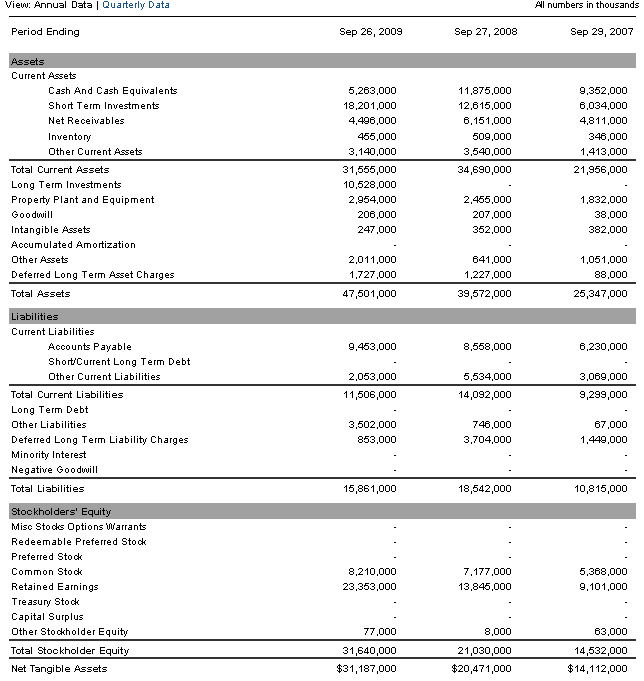What is Debt Load?
Debt load is the total amount of debt that a company has on its balance sheet. All publicly traded companies must file financial statements, including balance sheets, every quarter.
How Does Debt Load Work?
Let's look at a copy of Apple's balance sheet as compiled by Yahoo! Finance:

We can see that as of September 26, 2009, Apple had a debt load (the Total Liabilities line item) of almost $15.9 billion.
Why Does Debt Load Matter?
Companies carry debt for any number of reasons, and looking at debt load in and of itself may not be very useful. In most cases, you want to look at debt load relative to another measure, like equity, cash flow or total assets.
Many analysts look at a company's debt ratio to gauge its financial health. You can calculate the debt ratio by dividing Total Debt by Total Assets. Apple's debt ratio as of September 26, 2009 was $15.9 billion / $47.5 billion = 33.5%. This tells us that only 33.5% of Apple's assets are financed with debt.
[To learn how to evaluate companies using profitability, liquidity, and debt leverage ratios, click here to read 20 Key Financial Ratios Every Investor Should Use.]



